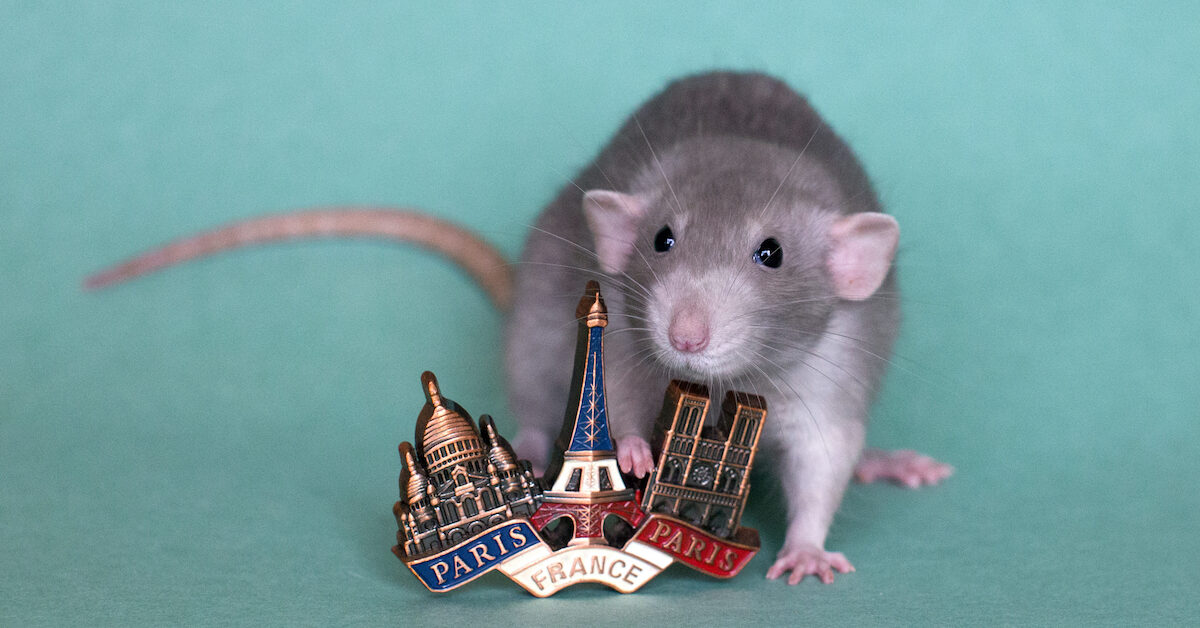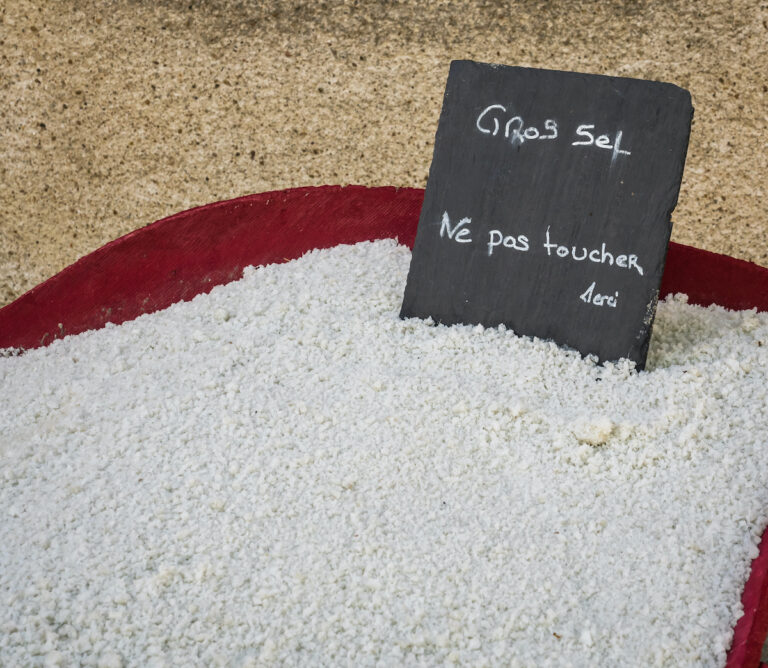March 08, 2024
Dear Frenchly Readers,
When we were leaving France two weeks ago to fly west to Boston, the airport was selling little stuffed animals of the animated Disney movie character, Ratatouille. This is the rat, who, in the story, becomes a celebrated French chef in Paris. We don’t really watch Disney movies, so this stuffy didn’t (thankfully) do much for my nine-year-old, though it was very cute and made quite well.
Most Disney movies have, to my husband, Dan, and me, seemed sadistically endorphin pumping and too scary for a small child; or the values seem not quite right for where we need to be, raising children post #MeToo, and with the utmost sensitivity to difference. Which brings me to this morning, when I was up early with my younger child, home sick, plopped on the couch before we’d even had breakfast: Reader, he and I watched Ratatouille. The point of the movie (on the off chance you’ve never seen it) is, essentially, that if we dispense with our preconceptions, we might find that some pretty wonderful things can come from unexpected places: like, rats.
Rats are curious creatures. Rats can be trained to detect cancer and landmines. They are extremely social animals and unfailingly loyal and empathetic to, not only their families, but also any other animals they become accustomed to, like humans, dogs, cats, birds. Rats will go to great lengths to save each other from floods and burning buildings. (Just think of that unforgettable novel, Mrs. Frisby and the Rats of Nimh, which, it turns out, may have gotten more closer to fact than fiction.) They have imaginations and they love to move to music. They have long delicate hands and are nimble in surprising ways.
But rats are also maligned and feared, often given human traits of evil, as if any other species other than humans were actually capable of evil. And yet, their existence is inextricably entwined with humans. In fact, brown rats, called Norway rats, came from Southeast Asia and spread throughout the world with humans as unwelcome guests on boats and in caravans. These rats came to Africa 800 years ago and then moved north to Europe. (They were not from Norway, despite the name.) The black rat, the one that brought the plague with fleas riding shotgun, is sometimes mistakenly called the ‘Parisian rat,’ even though some theorists say that Paris avoided the worst of the plague thanks to lemonade.** The black rat came to Europe, first during the Roman expansion, and then, once again in Medieval times, and is an entirely different species of rat from the Norway rat. Brown rats took over territory from black rats and are now the predominant rat across Europe. How rats carry deadly diseases, yet never get sick themselves, is something of an immune system miracle, one scientists are so interested in, they have been studying it for ages. In short, rats are the most successful species on the planet: Nothing can exterminate them, they adapt and continue to propagate and thrive, even in Chernobyl.
I have long been fascinated with rats. My fascination began in earnest, when, a year or two into living in our over-200-year-old house, a rat died in the ceiling between our brand new bathroom and our kitchen. To say this was a disaster does not do this story justice. The smell was impenetrable. We had to decamp from our upstairs bedrooms to the downstairs living room, run diffusers and reemploy the old-fashioned nosegay to survive. (I had a pouch of lavender permanently stuck to my nose with wall putty–not joking.)
Eventually, Dan took the ceiling down in the brand new bathroom. I remember it well, his shout, the animal in rigor mortis, the gray color. To this day I annoy him with my question, “Are you sure that was a rat? It looked more like a gray squirrel.” It looked like it may have been the size of a hippo, honestly. Or maybe a cat. He looks at me like I have gone around the bend, then calmly maintains, to this day, that it was a rat.
Because I’m not a hiding type, rather a blurting type, I told others, and soon people were telling me in sotto voce about dead rats stuck behind wainscoting in dining rooms, in car trunks, in mufflers, in toilets in summer houses, and running rampant in barns. I was hearing from neighbors about other neighbors who had them living behind their fridges, or in their basements, or rats that came onto their counters every night while they slept and ate their fruit. Even David Sedaris wrote about living in rodent infested apartments.
A few weeks after Dan found the rat, with our ceiling wide open, he found a leak in our plumbing in the new bathroom. Someone had put our pipes together wrong. He came to me the morning he realized this with tears in his eyes. He said, “I killed the rat. Two weeks before it died, I bleached down the shower. It must have been drinking that water. Without the rat, though, we would never have known we had a leak and we would have had a much larger problem. I am grateful to the rat.”
I started researching rats then and became fascinated by how endemic they are to human life. (If you have chickens, for instance, you have rats. Some neighbors across the road of ours have chickens, goats, old cars, piles of dump-worthy chaos and an old barn in their yard; rat paradise. But you don’t just have to have chickens or old cars to have rats–Boston has a problem with rats; New York City now has a rat czar (who, apparently, is not winning); Paris is the 4th most rats infested city in the world. (Here is a documentary about how France’s rat population exploded during Covid.) Marseille is not far behind.
What is hard for humans to understand, and, really, I do need to underscore this, is the fact that humans are part of the reason rats flourish; they could not, and would not, flourish without us. It’s our garbage in easily punctured plastic bags rather than metal bins, our leaky plumbing (rats have an insatiable thirst a scientist told me), or poor drainage systems, and an inability to prioritize putting compost in sealed containers (rather than in with the trash in the leaky bag), and have it compost in ways that are good for the planet and also good for our hygiene.
But the single biggest reason we keep having explosions of rats is simply this: poison. Our panicked desire to Napalm rats will never work. Remember what Rachel Carson said: “‘The control of nature’ is a phrase conceived in arrogance, born of the Neanderthal age of biology and philosophy, when it was supposed that nature exists for the convenience of man.”
Paradoxically, rodenticides do the exact opposite of what we hope; they actually help the species as a whole. If we poison a rat and a fox or a coyote eats it, we have lost a predator. One of the best rat catchers in the world is an o’possum. An o’possum poisoned can no longer hunt in our yards. (Bring on the possums, I say–raise them on farms, and release them! They also gobble up ticks.) Raccoons eat rats. Eagles and hawks–particularly the red-tailed hawk–are your best rodenticide. Minks are incredible rat killers. Too bad the NYC owl, Flaco, died; owls scoop rats right up in crepuscular light. (Keep your outdoor lights off at night so predators can do their work.) If we poison rats, we poison all these creatures, too. A pair of rats (one female, one male) can have 1,300 offspring every year; that number can grow exponentially with each generation. A coyote, meanwhile, only has 4-7 pups a year; a possum 18-30 babies a year. You can do the math.
(Ok, fine, I’ll do it for you: If one coyote or possum catches one female rat, we have avoided 1,300 new rats that year, and projected out we have avoided an exponential amount more. Times that by 18 possums that are kept healthy and alive. Ok, you get it. We are better off with predators.) The demerits of rat poison include: It can take up to seven days to kill a rat after ingested; the rat might just be walking wavy for a bit, which might make a predator pick it off. Also, many rats are now withstanding poisons, so larger and larger quantities are needed; rats see other dead rats and won’t then eat the poison; they die from poison in inconvenient places, like your walls.
In France, a slightly different approach is being considered: One viewpoint from a recent pest control manager of Paris was, simply, find a way for them to “stay below.” In this piece in the Times he said: “‘A rat is a very intelligent and athletic animal…Rats play a very useful role for us because what they eat we do not need to dispose of, so it’s very economical for us, and when rats are underground they also clean the pipes with their fur when they run through them. So we need to keep them. They’re sort of our friends, but they need to stay below. That’s all we ask: that they stay below.’”
Speaking to their intelligence, or our idiocy, though Dan and I tried, we never caught a rat in a trap. We caught all kinds of things we didn’t want to trap, and that was a sad period in our lives, one we regret. Scientists are now trying edible birth control for rats instead of poisons, which may be the best idea yet. How that might affect the predator species, I am not sure. This article from Time Magazine has the headline, “Rat Poison, Step Aside.”
Perhaps, to borrow from Ratatouille’s main character, Remy, “Change is nature.” The ones who need to change faster are humans. The rats are adapting and changing all along; if we keep doubling down on tired and ineffective poisons, we will never keep up. Rats, folks, are here to stay. Deal with it…like, you know, rats.
At the end of watching Ratatouille this morning, my son turned to me and said, “When we go back to France, I want that stuffy.” We may have to pick up two.
À cuisiner, boire, regarder et lire ce weekend:
Ok, no boiled rat on the menu today. But a better link to the two poems I sent you last week by Mary Jo Salter, one of which is about a rainbow over the Seine.
Also, this musical version of Ratatouille which Cat found me this morning, and dates back to the olden days of Covid, featuring the inspiration when creativity had no borders. Make your day: Watch it!
Also, the ratatouille dish in the movie Ratatouille looks a lot more like Tian, to me. I ate so much amazing zucchini this February in France. (Novelist and Frenchly contributor, Kate Christensen told me in this interview that she used to hate courgette). The movie made me hungry for Tian once I saw it this morning. Here is Kate Christensen’s recipe for this sunny Provençal specialty. Maybe just thinking about it will beckon summer.
I was looking back through our archives and remembered this hilarious piece by ex-pat writer, Karen Karbo, about first moving to France with her husband, Jerrod.
Spring summoning cocktails anyone? Yes, please.
Am I the only person who has not yet seen The Taste of Things? Tell me!
À bientôt,
**A few months ago, I wrote about how Paris avoided the worst of the plague–the reason is that rats were eating lemon rinds as the plague coincided with a boon for street sellers of lemonade who threw their peels in the roads. The rats ate the peels and the bitter acids in the lemon peels repelled fleas…







